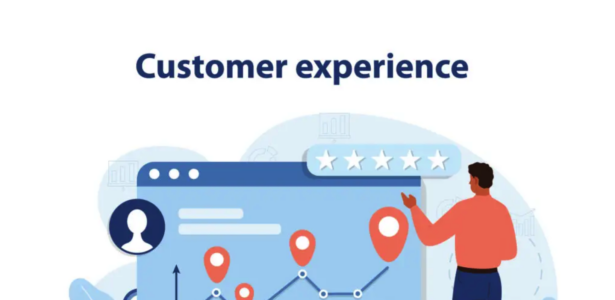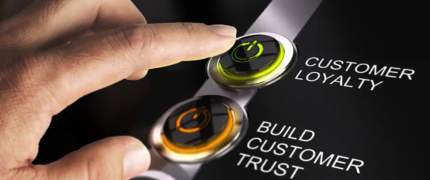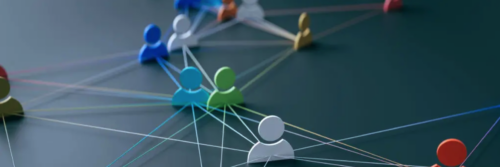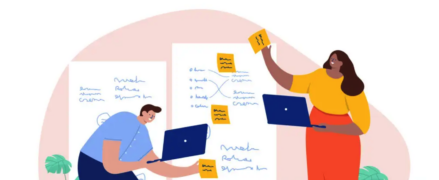How to Personalize Customer Experience (CX) at Every Touchpoint

In today’s competitive market, personalization isn’t just a luxury—it’s a necessity. Customers expect brands to understand their needs, preferences, and behaviors across every interaction. For small teams and bootstrapped entrepreneurs, delivering a personalized customer experience (CX) can be a game-changer in building loyalty and driving growth.
In this in-depth guide, we’ll explore how to personalize CX at every touchpoint in the customer journey. We’ll provide actionable strategies, real-world examples, and tools to help small teams create meaningful, tailored experiences that convert.
Why Personalization in CX Matters
1. Builds Stronger Customer Relationships
Personalized experiences make customers feel seen and valued, fostering trust and emotional connection with your brand.
2. Increases Customer Retention and Loyalty
According to research, 80% of customers are more likely to purchase from brands that offer personalized experiences.
3. Drives Higher Conversions and Revenue
Personalized marketing campaigns deliver higher engagement, click-through rates, and conversions, directly impacting sales.
4. Enhances Brand Differentiation
For small teams, personalization is a powerful way to stand out against larger competitors with bigger budgets.
Key Touchpoints to Personalize in the Customer Journey
The customer journey consists of several stages where personalization can make a significant impact. Let’s break down how to tailor experiences at each stage.
1. Awareness Stage: Capturing Attention
At this stage, customers are discovering your brand for the first time. Personalizing how you engage them increases the chances of turning curiosity into interest.
Strategies to Personalize:
- Targeted Ads: Use data from browsing behavior to create highly relevant ads.
- SEO Content Personalization: Create blog content tailored to specific audience segments.
- Social Media Engagement: Personalize content based on platform trends and audience preferences.
Example:
A small eco-friendly skincare brand runs Facebook ads targeting eco-conscious consumers by highlighting sustainability in product packaging.
Tools to Use:
- Google Ads for audience targeting
- HubSpot for content personalization
- Canva for custom social media visuals
2. Consideration Stage: Nurturing Interest
Customers are evaluating whether your product or service fits their needs. Personalized content and communication help guide them toward a purchase.
Strategies to Personalize:
- Email Drip Campaigns: Segment email lists based on user behavior (e.g., browsing history, downloads).
- Dynamic Website Content: Show product recommendations based on site activity.
- Interactive Quizzes: Use quizzes to help customers find the right product or service.
Example:
An online course platform offers a quiz asking users about their goals, then suggests relevant courses based on their responses.
Tools to Use:
- Mailchimp for email automation
- OptinMonster for on-site content personalization
- Typeform for interactive quizzes
3. Purchase Stage: Streamlining the Buying Process
Simplify and personalize the checkout experience to reduce cart abandonment and increase conversions.
Strategies to Personalize:
- Pre-filled Forms: Use saved information to reduce friction.
- Upselling and Cross-Selling: Recommend complementary products during checkout.
- Special Offers: Provide discounts or promotions based on customer behavior.
Example:
An e-commerce store suggests accessories that complement the customer’s chosen product and offers a limited-time discount on bundle purchases.
Tools to Use:
- Shopify for smart product recommendations
- Klaviyo for behavior-based email offers
- Bold Upsell for cross-selling
4. Post-Purchase Stage: Building Loyalty
The relationship doesn’t end after a purchase. Post-purchase personalization encourages repeat business and customer advocacy.
Strategies to Personalize:
- Thank You Emails: Send personalized emails with product tips or care instructions.
- Loyalty Programs: Offer rewards tailored to purchase history.
- Feedback Requests: Request reviews on specific products purchased.
Example:
A fitness equipment brand emails personalized workout plans that incorporate the customer’s recent purchase.
Tools to Use:
- Yotpo for personalized review requests
- Smile.io for loyalty programs
- PostPilot for custom thank-you cards
5. Retention Stage: Encouraging Repeat Purchases
Keeping existing customers engaged through relevant, timely communication is key to driving repeat business.
Strategies to Personalize:
- Replenishment Reminders: Remind customers when they’re likely running low on consumable products.
- Exclusive Offers: Provide early access to sales or product launches.
- Personalized Content: Share blog posts or videos based on past purchases.
Example:
A coffee subscription service emails customers offering a discount to renew their subscription just before it ends.
Tools to Use:
- ReCharge for subscription reminders
- Segment for data-driven personalization
- ActiveCampaign for email automation
6. Advocacy Stage: Turning Customers into Promoters
Encourage happy customers to become brand advocates through personalized engagement.
Strategies to Personalize:
- Referral Programs: Reward customers for referring friends with tailored incentives.
- User-Generated Content Campaigns: Feature loyal customers on your website or social media.
- VIP Programs: Offer exclusive perks to top customers.
Example:
A small fashion brand invites top customers to become ambassadors and rewards them with free products for referrals.
Tools to Use:
- ReferralCandy for referral programs
- LoyaltyLion for VIP rewards
- Instagram for featuring customer stories
Best Practices for Personalizing CX at Every Touchpoint
1. Collect and Leverage Customer Data Responsibly
- Use surveys, website analytics, and purchase history to gather insights.
- Be transparent about data collection and comply with privacy laws (GDPR, CCPA).
2. Use Segmentation and Automation
- Segment audiences by behavior, demographics, and preferences.
- Automate personalized messaging to deliver timely interactions.
3. Maintain Consistency Across Channels
Ensure that personalization feels seamless whether customers interact via email, website, or social media.
4. Balance Personalization with Simplicity
Avoid overwhelming customers with too much personalization. Keep interactions intuitive and user-friendly.
5. Continuously Optimize
Collect feedback and use analytics to refine personalization strategies over time.
Conclusion
Personalizing the customer experience at every touchpoint is no longer optional—it’s essential for building meaningful relationships, increasing loyalty, and driving revenue. Small teams and bootstrapped entrepreneurs can use personalization as a competitive advantage by understanding their customers and delivering value at every stage of the journey.
Start small: Pick one touchpoint to personalize today. Whether it’s a targeted email or a custom product recommendation, even small changes can create big results.
Ready to elevate your CX strategy?
Leverage tools and strategies to start personalizing every customer interaction and watch your business grow.
Tags: Customer Experience, Personalization, CX Strategy, Small Business Growth, Customer Journey







